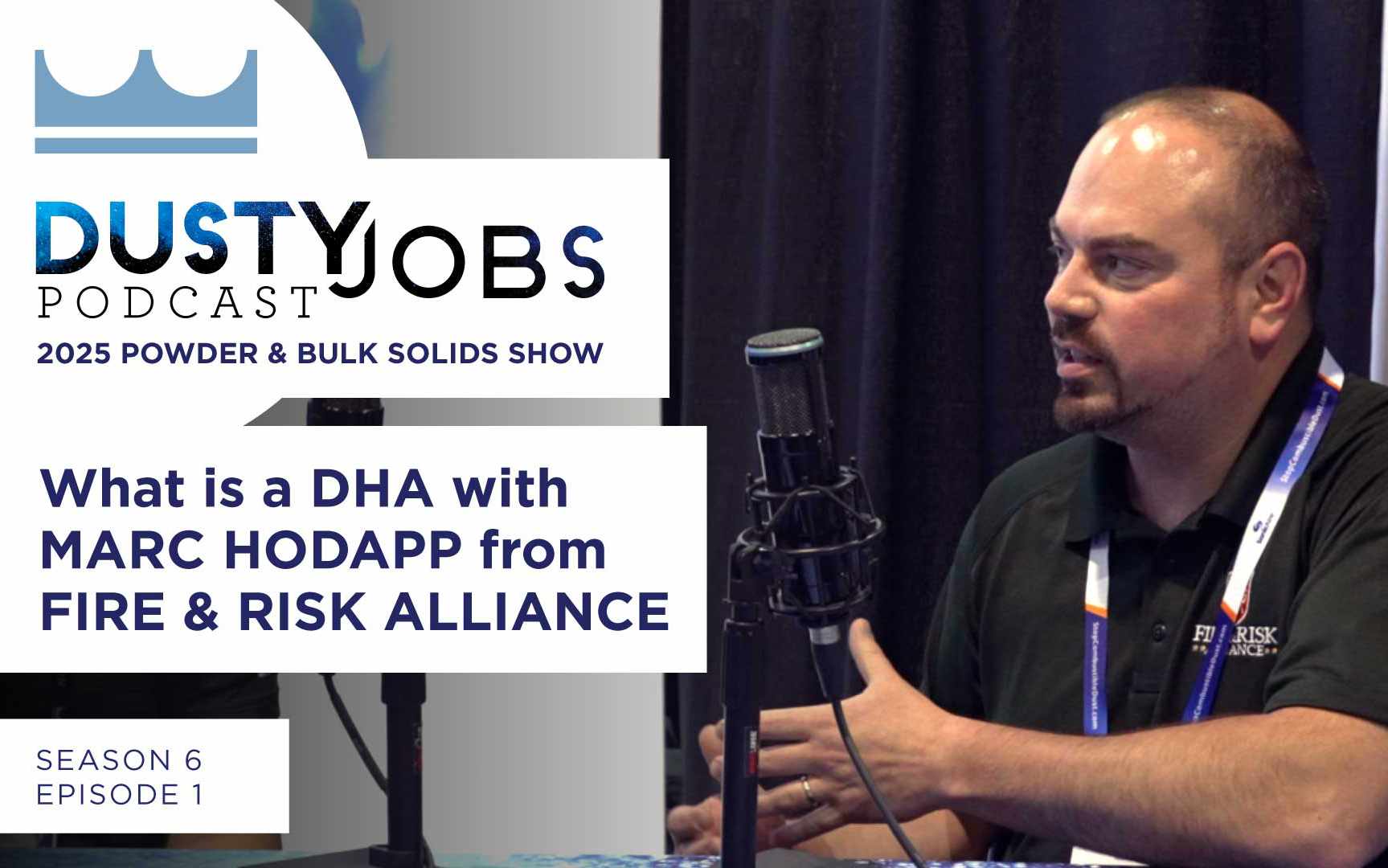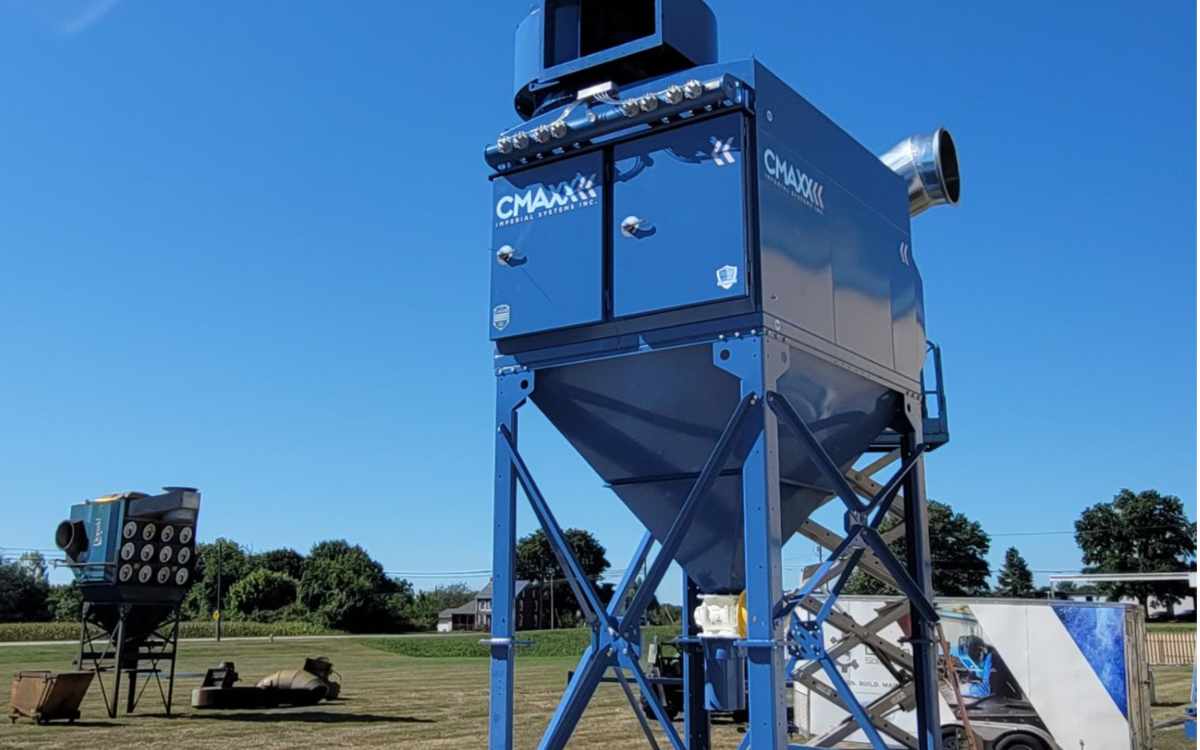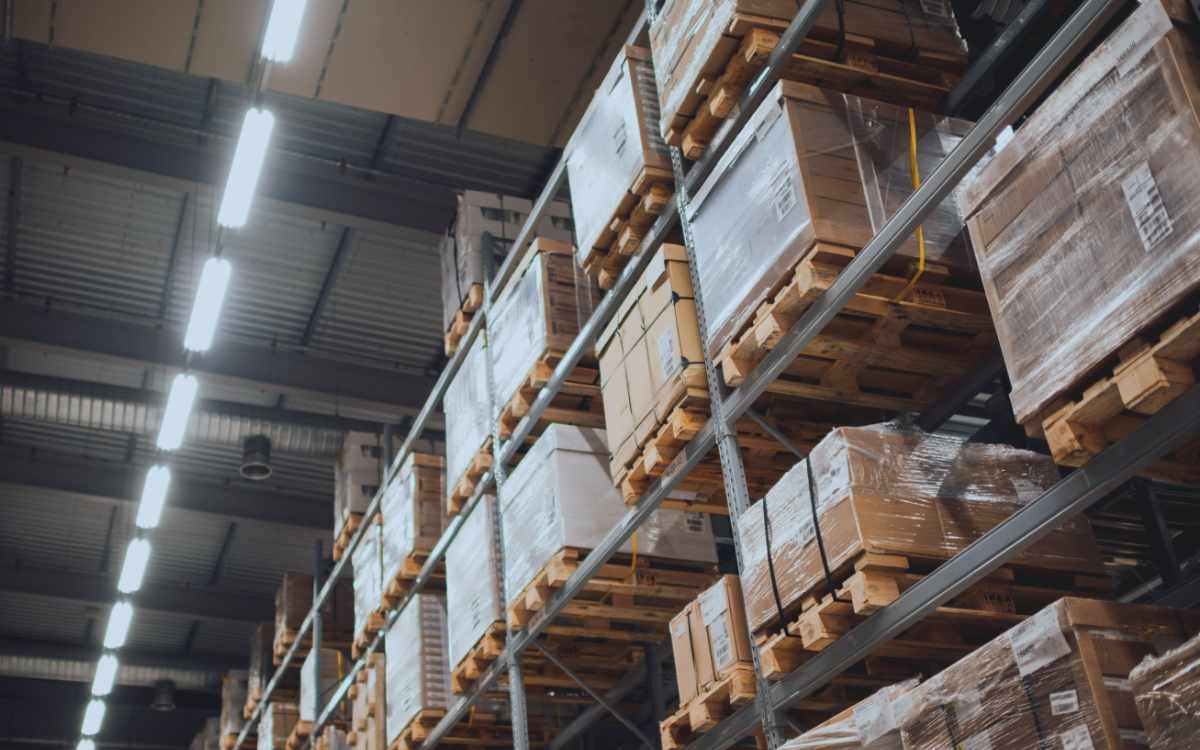This episode is full of the ins and outs of how to go about getting a full Dust Collection system for your facility. Jeremiah talks about the different things you have to consider when you begin your search. They also discuss the challenges that come into play when dealing with explosive dust. Also if you need, Imperial Systems is always here to help guide you to the best design for your facility.
If you have any suggestions on Dust Collection Equipment please feel free to email us at dustyjobspodcast@isystemsweb.com.
Dusty Jobs Podcast Episode 6 – System Design with Jeremiah Wann
Narrator: Welcome to the Dusty Jobs Podcast from Imperial Systems. Industry knowledge to make your job easier and safer.
Donovan: Thanks again for joining us here today. We have Jeremiah Wann again. How are you Jeremiah?
Jeremiah: I’m doing great. How are you doing?
Donovan: Good, good. Hey, today we have a couple of questions that came in. We’re going to answer some of those. One of them was on system design. So we got Jeremiah back in. Jeremiah, tell us about yourself and what you know about system design, a little bit of your own history.
Jeremiah: Right, okay. Well, my name is Jeremiah Wann. I’m the CEO of Imperial Systems. Day in and day out that’s what we do here, system design. Is this more of a weld fume type question?
Donovan: We’re going to be covering some weld fume system design. That’s what we got asked to cover. You’ve been doing this for, what?
Jeremiah: Over twenty years.
Donovan: Over twenty years?
Jeremiah: Mmhmm.
Donovan: So you have a little bit of experience in this realm. So lets just start walking through it from the beginning. So lets say I’m a customer, and I’m coming to you and I’m saying, “Hey, I have weld smoke in my shop. What do I do?” Just basically where do I start? Where do I need to start to figure out where to handle this issue?
Jeremiah: Sure. Well, you know, it’s a conversation we have daily. In fact, I was just talking with a guy a little bit ago. A common scenario is that a customer calls in or emails saying that they have weld fume issues and they need to address it. So, what we do typically is we either send someone out on site depending on where its at and the time frame we have to get it done. Usually someone will go on site but if not we can work with pictures and then sketches and stuff to at least get started.
Donovan: But an onsite visit is the best situation, right?
Jeremiah: Always, yeah always the best thing to do for sure. Typically what we need to do is find out what they’re doing. Is it MIG? Is it TIG? Are they soldering? What’s the application, right? One of the things we like to look at too is obviously is it robotic, is it manual. How many hours a day are they welding and what’s their downtime?
Donovan: So let’s say I’m the customer. I call in. I say “Hey, I’m having this situation. You’re going to come out. You’re going to look at my system.” What should I expect are the questions that you’re going to ask me once I get out there? What should I have ready for you as a customer who is trying to solve my weld smoke problem. What is some stuff I should be ready with?
Jeremiah: Right, its pretty easy. That’s what’s nice about this side of this is we take full responsibility. Essentially what I would like to do is go take a walk around. Go see the application. See the operation, if it’s up and running. Sometimes we get a call saying “We’re putting a plant in. Here’s what we’re doing.” Really all we need to know is just what do the weld cells look like? Is there weld cells? Sometimes there’s just big open high bays with overhead cranes. We can do that too. They all have their challenges. Basically, let us get in front of you. Let us find out from you what specifics you have. Are you welding stainless? That’s one thing today that’s kind of a big thing. We want to make sure that there’s not hex chrome present.
Donovan: Now, if there’s hex chrome present does that create another set of standards? Another set of issues? If I’m welding hex chrome what should I be worried about?
Jeremiah: Well the main thing is our filters can handle it. Our filters will clean it properly and bring it back into your plant for that matter to where you can breathe the air again. You just have to put HEPA filtration after the primary filters to get that out.
Donovan: So it would just be another thing that you’re trying to qualify what needs done to maintain that air quality.
Jeremiah: Yeah, that’s not a problem. We also may deal with the way we capture it. So, if there’s something like hex chrome in it where you really don’t want that smoke going up inside the guy’s weld helmet or across his body. So, usually we want to use some sort of close source capture with a hood or with an arm or something. Downdraft if you can.
Donovan: So lets take just take one step back. You’re going to come look. You give us an evaluation of what our facility looks like. You have to identify what they’re welding on, what the smoke’s producing, where it’s coming from. Then from that point you try to decide kind of system you need?
Jeremiah: Sure, sure. So, yeah at that point what we really like to do is determine what size parts they’re doing. Are they in weld cells? Are they out in the open? I’ll just break it down for you. You really have a few different types of systems that you can do weld fume in. If you have a high bay, you’ve got big parts. You’ve got overhead cranes. You’ve got a lot of obstacles. You may be welding tanks in one part of the shop one day and the next day you may be welding semi trucks.
Donovan: Yeah, big stuff.
Jeremiah: Yeah I mean like small tanks one day and semi trucks the next day. You never know what you’re going to see in our business.
Donovan: Like a custom shop.
Jeremiah: A custom shop. So in that case really the only way to do that outside of little portable units with arms on them which, we can talk about that a little bit. I’m not a big fan of those.
Donovan: Well, I can only imagine trying to drag one of those behind you all day. It would be a challenge.
Jeremiah: Yeah, there’s definitely a challenge with those. Really the only other way to do it is to just do ambient. What that means is to just put ductwork up above the crane rails or down below the crane rails on the stools of the crane, if at all possible. Basically we just work off of air changes at that point. We may do eight to ten air changes an hour base on the volume of the building. You can also do more like localized ambient. So if you’ve got a hundred thousand square foot facility but you’re only doing welding in a thousand square foot of it or whatever, you can do ambient above that area as well.
Donovan: Kind of put a unit in there to handle that smoke drifting into the rest of the facility.
Jeremiah: Yeah, and that’s what we do here. We have a 95,000 square foot facility and we only weld in probably 30 or 40,000 of it.
Donovan: Theres no need for duct collection where we’re storing boxes.
Jeremiah: Yeah, where we’re doing assembly it’s really clean. We don’t do that there.
Donovan: Yeah, so that would be an ambient system solution?
Jeremiah: That would be an ambient system. The other way to look at it would be where, oftentimes when you go into a plant, and say they’re building lawnmower parts or automotive carseats. We get into all kinds of different things, but those are small parts. So lets say they’re making those on fixtures or robotically. At that point then you can do source capture. If they’re robots, then, you know, usually the robots are enclosed and they’re really easy to put a hood over. So that’s more localized. So with a robot you may put a hood over it or if its already got an enclosure you just vent that enclosure.
If you’re welding in cells then you can either do a side draft hood or downdraft hood, or an arm that we talked about earlier with the portables. The issue with the arms, or I guess I’ll start with the nice thing about the arms. The nice thing about the arms is if they’re used properly they can probably capture 100% of the smoke for the most part. They use less air because you have a six inch diameter pipe versus with ambient you’ve got to take more air into consideration.
The downside to it is that nobody uses them. It’s tough because even in our old plant we spend a lot of money putting about twelve arms down in this one area and thought, “This is going to be the way to go. We definitely want to use it.” Of course we put a CMAXX in with it and our cartridge filter. As the owner of the company, it would drive me absolutely crazy because we have a really good crew of people here. No doubt about it. They’re all in, and they’ll do whatever it takes to get the job done. But they did not like moving that hood all day long. So they’re welding pipe, or they’re welding a frame up, and every six inches you have to stop, not just to reposition the weld again, but now you have to think about that hood. That’s really the last thing on that welder’s mind, or it should be. He’s got to worry about a quality weld.
Donovan: That’s one more step for them to do.
Jeremiah: We just haven’t seen them work well for that.
Donovan: So in that situation you’re saying maybe a hood in weld cell is a little bit better? Or a downdraft table is a better solution at that point?
Jeremiah: Yeah, and sometimes we’ve done hybrid systems too, where really the majority of it we’re going to be able to capture with the ambient but over in this area they’ve got stainless or something they’re welding on, or they’re doing little six inch or eight inch parts all day long. That’s a perfect hood application. Just keep putting that part back on there. No big deal. I get it. We don’t have it anymore but we used to have a weld seamer at our old plant where it would weld five foot joints of pipe all day long. You can put a little three inch flex hose on that and boom, no problem. So, we always take those into consideration. Ultimately we’re trying to design the best system for our customer. We have to be competitive. We have competition, but more importantly than that, we have to design a system that they can use for the next 25 years.
Donovan: Well, I’ll tell you what, Jeremiah, the more you talk about this it seems like there is just not one size fits all solution. Like, it’s just not out there, right? You kind of have to do an evaluation at the beginning, see what you’re dealing with. I know you and I were talking earlier that some of the things you have to consider is that weld fume used to be weld fume, but now sometimes its considered an explosive dust.
Jeremiah: We just had our seminar here with the industry expert on combustible dust. We’re always trying to brush up our skills here and keep our sales team and our engineers on point with what the industry is doing and to make sure we are doing things to code. We talk about it alot. That’s one fo the first things we do. We say, “Have you had your dust tested?” Of course in the welding industry or metal manufacturing people just look at you funny because “Well we’re welding carbon steel,” you know? Up until about five or six years ago we used to kind of think the same way. “Well we’re welding carbon steel.” I get that in wood, or I get that in sugar, or I get that in whatever.
Donovan: Cornstarch.
Jeremiah: Cornstarch, of course. All these big ones. Carbon steel weld fume I don’t get it. What happens is there are byproducts in there, there’s oil sometimes in there. The metal can oxidize. Theres different things that can cause combustion in weld fume. Some of our biggest accounts now, multi-billion dollar companies, are saying that’s our standard. We’re at 70 KST and that’s what’s we want to do. We like to bring it to the light and do what’s right for the customer.
Donovan: That probably also comes into consideration when you’re thinking about what solution you need. That would determine whether you need your collector inside, you need it outside. It’s not just as simple as sticking something on there to suck it up like a shop vac would do. You need to know what you’re dealing with the have the right solution.
Jeremiah: You bet. I mean, we could have another five podcasts on combustible dust and NFPA. Since this is weld fume and weld cells that we’re talking about here. When you do combustible dust and you’re trying to put the collector inside NFPA states something like if it can be outside it should be outside. That “should” means that if at all possible we can engineer around and get it outside we should. Sometimes you just can’t, it’s not possible. Big automotive plants or forklift companies just to name a couple. It really needs to be inside next to the robot.
Donovan: What do you do when you have explosive dust inside? That sounds like a real hazard. What do you do in that situation?
Jeremiah: To the point where some of our top customers, you know, they’re putting in a $100,000 weld fume system and they’re not upset at all about adding another $40,000 worth of combustible dust isolation type equipment. Chemical type isolation or mechanical. So, that’s how real it is, you know? I just want to say that. What we do in that case it put explosion vents on it and vent it to the roof. That’s one possibility. You need to isolate the inlet so the explosion or flame front doesn’t mitigate back through the hood, back to the robot or worker. So we’d put an isolation valve on that. In addition to that, there’s things like our new product, the Rhino Drum. Have you heard about it?
Donovan: I’ve heard about it, yeah.
Jeremiah: So, it’s a good product. It’s the first ever tool free, combustible dust tested 55 gallon drum. It’s designed to stop an explosion from the discharge of the dust collector. Now we’ve put an isolation valve on the inlet side. We’ve got the Rhino Drum or an Airlock on the discharge side. After that we’ve got the collector itself to deal with the explosion. So you can either vent through the roof or if you can’t vent through the roof you can put a flameless vent on there. You can look on the website and see what that is. Chemical isolation is also a real nice, easy way to deal with things.
Donovan: I would imagine that whatever collector you have in there, whether its ours or someone else’s you want to make sure that that thing can handle an explosive dust. You have workers. You have equipment. You have everything that’s in real close proximity to that. You can’t just put anything in there is what I’m saying.
Jeremiah: That’s a good point. We take that extremely seriously, to the point where on our first testing that we ever did we spent well over a quarter of a million dollars. That’s been a while back. When we first started getting our equipment tested by a third party, what we wanted to do was make sure it can withstand an explosion.
Donovan: If you’re designing a system, if you’re looking at designing a system when you’re going to have to get one, these are all things you need to consider. You can’t just go buy a used collector from the eighties and hope that its going to handle what you’re doing.
Jeremiah: Yeah, you’re obviously risking a lot if you were to do that. I think, you know, consult, whether its us, consult with a professional or another dust collection company and just do your homework. Make sure that they’ve done their homework. We did, you know, the first go around was a quarter million dollars. We’ve done many since then. I don’t know how much money we have wrapped up in making sure that our collectors and our equipment meet the standards, that it will withstand an explosion at the rating we put on our equipment.
Donovan: So once you have the layout, how you’re going to put the collector, where you’re going to install it, how do you even know how big of a collector or how small of a collector you need? How do you figure that out?
Jeremiah: Theres a couple different things you have to take into consideration. Obviously, you know, like I said earlier, are the parts sticky? Is there oil? A lot of times in stamping applications there are release oils on there, lubricants on there. So that can get kind of messing when you’re welding it. Thats something to consider. How many, if they’re running MIGs on robots, is there one MIG, or is there four MIGs in there per robot? So these are things we look at. Ambient systems will take a different air to cloth ratio than maybe a close capture one would. We basically have internal formulas where we decide if its a robot cell, how many air changes do we put in that robot cell to make sure that no smoke gets out? Thats the idea, really, that you just don’t want any smoke getting out of that cell. That’s obviously good for the safety of the people. It’s good housekeeping. You want to make sure all your bearings and seals and all that stuff on your equipment that you spend a lot of money on lasts a long time.
Donovan: So, just to kind of go back we’re going to walk through step by step. First thing you have to do is get someone in there to look at the system, to see what you’re dealing with, to see what kind of dust you have, to see if its explosive, right? So that’s kind of step one. Step two is once you’re in there, you see what kind of system requirements you have. It might be an ambient system. It might be a source capture system. It could be little bit of both, right?
Jeremiah: Right.
Donovan: From that, you go to the actual size of the collector and kind of see what you need to make it safe.
Jeremiah: It’s pretty easy, really. I could see where if you don’t do it day to day it could be overwhelming or feel overwhelming when you see it. When you see smoke, that’s an opportunity to call us, or call anybody for that matter. Get an expert on the phone and bring them in. We try to make it really easy to do business with us. That’s a big deal for us around here. The last thing we want is for our customer to be struggling. We kind of take all that off their plate.
Donovan: We have guys like you. We have other guys out in our shop that have been doing it for a long time, and have a wealth of knowledge here to help out anybody who is trying things out.
Jeremiah: We have sales engineers all over. We have them here and remote. We have a big network of representatives across the map. We can cover you for sure.
Donovan: We don’t want anybody to feel like they have to tackle this on their own. A lot has changed over the years. Some information is still good. Some of its old. We want to make sure you’re making the right decisions and making sure everybody is safe and have a good clean work environment and that’s what we’re here to do. That’s what our goal is as a company, to promote the health and safety of those who are working in your environment.
Jeremiah: I think it’s big too, from my standpoint. I’m the owner of the company and for me it’s always fun bringing people in the plant. You can say all day long that you really care about your people. You can brag about your machinery. You can brag about work you put out. You know, whatever that might be. When it really speaks volumes is when you’ve spent $100,000, or $10,000. Don’t get me wrong; it could be a lot less. A mid sized system may be $100,000 just to clean up the work environment. I mean, you may have spent $100,000 on a plasma table, but if that shop is full of brown smoke, what message is that sending to your customers, and your employees for that matter? I always think about it this way. These guys go home to their families at night. They’re bringing that weld fume into their home. They’re doing laundry. They go and hug their kids at night, and I kind of feel like its my responsibility to make sure that they’re not bringing this dirt home. That they’re not bringing this dust home. I feel pretty good about that.
Donovan: We want to help other people be able to have that in their facility too.
Jeremiah: Absolutely.
Donovan: Hopefully this has helped you if you’re out there looking for a weld fume system. We hope you’re able to figure out a little bit closer to what your requirements are. It might seem overwhelming. It’s not really that complicated of a process. Don’t feel like you’re on your own out there. We’re here. We’re glad to help you. Feel free to give us a call. Check out our website. Drop a line. We’re glad to help. Theres people here all the time. Jeremiah, thanks for coming on.
Jeremiah: You bet.
Donovan: Thanks for taking something that seems a little complicated and making it simpler so we all can understand it. Write in your questions to dustyjobspodcast@isystemsweb.com. If you have other questions about how other systems are designed. Maybe if you have another application. We’re glad to tackle that for you and help you feel like you’re not out there on your own.
Jeremiah: Yeah, for sure.
Donovan: Thanks for listening this time, and we’ll talk to you again.
Narrator:Thanks for listening to the Dusty Jobs Podcast. Breathe better, work safer.

 .
. 






